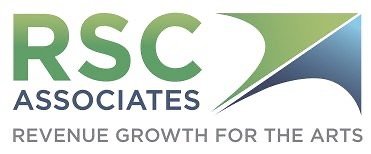BOARD RECRUITMENT - LEADERSHIP RULES!
With Bob Swaney
We’re diving into a topic that can make or break your nonprofit: Board recruitment and leadership. Let’s call it what it is: leadership RULES.
Developing a highly active, energetic, responsible, and productive Board is the single most important element required for the long-term success of any nonprofit organization, including those in the arts sector. Mission, vision, standards of excellence, and fiscal sustainability all thrive through steady and dedicated leadership. In short, leadership either makes or breaks your organization.
Listen today for insights on what it takes to attract and maintain an exceptional Board, some common pitfalls that organizations face when building their Boards, and, most importantly, how to avoid them.
Read the full transcript below or click the button to listen.
FULL TRANSCRIPT OF THE PODCAST
Today, we’re diving into a topic that can make or break your nonprofit: Board recruitment and leadership. Let’s call it what it is: leadership RULES.
Now, I’m about to state the obvious, but it’s important to set the stage: Developing a highly active, energetic, responsible, and productive Board is the single most important element required for the long-term success of any nonprofit organization, including those in the arts sector. Mission, vision, standards of excellence, and fiscal sustainability all thrive through steady and dedicated leadership. In short, leadership either makes or breaks your organization. Period.
I’ve seen boards that have transformed their arts organizations from frail institutions on the verge of collapse to thriving, vibrant entities that add tremendous value to their communities. Great Boards create great arts organizations because they understand their role and activate in the proper way.
But let’s be clear: Board responsibilities go way beyond simple governance. A great Board doesn’t just keep the ship afloat—they steer it boldly into new waters. Great Boards lead; not-so-great Boards manage. Great Boards set ambitious visions; not-so-great Boards stick with the status quo. Great Boards rally their networks, expand community ownership, and celebrate success; not-so-great Boards raise the organization’s blood pressure, view the organization as theirs and theirs alone, and play the blame game when things fall short.
Seriously, how great is your Board?
Let’s get into it. Today, I’m sharing insights on just a handful of things that it takes to attract and maintain an exceptional Board. We’ll also discuss some common pitfalls that organizations face when building their Boards and, most importantly, how to avoid them.
The Common Pitfalls in Board Recruitment
Let’s start with the mistakes—because, let’s be real, recognizing where things go wrong is the first step to getting them right. Here are some all-too-common pitfalls:
1. Weak Expectations
Too often, we recruit Board members based solely on their status or connections. “Oh, they have influence! Oh, they’re well-known!” Sound familiar? The problem is that this is a shortcut in recruitment and not a good one. In using this as our sole criterion, we glaze over the deeper expectations of Board service just to get a “yes.” And what happens when you set low expectations? You get low engagement. Even worse, you might eventually ramp up expectations after they’ve joined—and then they feel blindsided. Nobody wins.
Here’s the fix: Create a comprehensive Board member job description and include it in your recruitment process. Be upfront about the commitment—time, resources, responsibilities—right from the start. Set the bar high, and you’ll attract volunteers ready to rise to the challenge. Trust me, the right people will appreciate the clarity and the opportunity.
2. Ignoring Term Limits
Bylaws often include term limits, but so often, they are not enforced. Letting a great Board member stay indefinitely might seem like a win, but it stifles growth. Here’s the deal: Every Board member has a limited capacity for connections and resources. They also have limited interest and stamina to focus their volunteerism on a single organization. Staying on too long can lead to limited creativity and burnout—and that’s not good for anyone. Plus, fresh perspectives are invaluable to your arts organization.
Here’s the fix: Treat term limits as a vital renewal tool. Develop an alumni engagement program for former Board members, keeping them involved as ambassadors or special project advisors. This allows for fresh perspectives on the Board while maintaining a connection with seasoned leaders.
3. The “Managing Board” Trap
In the early stages of any nonprofit, the Board often wears all the hats—it’s just how it works. But as staff are hired and the organization grows, the Board’s role should naturally shift. Boards should “only do what only they can do,” and if there is staff, managing the organization doesn’t fall under that umbrella. They should focus on casting the vision, strategic growth, and expanding the organization's value throughout the community. If a Board member struggles with this transition from ‘manager’ to ‘leadership,’ don’t write them off; instead, consider other roles where they can still contribute meaningfully.
Here’s the fix: Use Board development workshops to clarify roles. Pair new Board members with mentors to model the right balance between leadership and operational involvement. Create job descriptions that explicitly differentiate between governance and management.
4. The “Report Card” Mentality
Setting expectations is terrific, but too often, the ‘report card’ approach is more punitive than praising. Keeping such a regimented score of every Board member’s activity is often counterproductive. When you focus on checklists, you treat every Board member the same and lose sight of the individual talents they bring to their role.
Here’s the fix: Replace formal report cards with quarterly one-on-one check-ins between the Board Chair and each member. These conversations should focus on their experiences, wins, challenges, and ideas. This approach builds trust and fosters collaboration.
Building a Strategic Approach to Board Recruitment
Now that we’ve covered some of the mistakes and pitfalls let’s focus on improvement. Building a strong, effective Board isn’t something you can just wing, and it doesn’t grow organically. It takes mutual commitment, effort, and time. Here’s how you can get started:
1. Develop a Governance Committee
Form a dedicated governance committee to oversee Board recruitment, development, and evaluation. This group should ensure that all recruitment aligns with your strategic plan and organizational goals.
2. Conduct a Board Composition Analysis
Evaluate your current Board to identify gaps in skills, expertise, and community representation. Use this analysis to create a matrix of ideal attributes for new recruits, ensuring your Board reflects the community it serves.
3. Establish a Formal Recruitment Pipeline
Create a year-round recruitment process rather than scrambling to fill vacancies. Maintain a prospect list and cultivate relationships with potential members before asking them to join.
4. Offer Comprehensive Orientation and Training
Onboarding is critical. Provide new Board members with a detailed orientation, including your organization’s history, mission, and goals. Offer ongoing training sessions to deepen their understanding and engagement.
5. Foster a Culture of Appreciation
Consistently recognize and celebrate the contributions of your Board members. Public acknowledgments, personal notes of thanks, and invitations to exclusive events can go a long way in keeping them engaged.
Closing Thoughts
Building a great Board isn’t about checklists or quick fixes. It’s about creating a culture of leadership, vision, and commitment. When done right, Board recruitment strengthens your organization and energizes your mission like nothing else can.
If you remember just one thing as you head into your next Board recruitment cycle, make it this: One way or the other, leadership RULES. If you take the time to plan, evaluate, and recruit with intention, having a dynamic Board that drives your organization confidently into the future is a great result.
Oh, and one last thing: Don’t forget to celebrate your Board members. Recognize their contributions, big and small. A little gratitude goes a long way.



